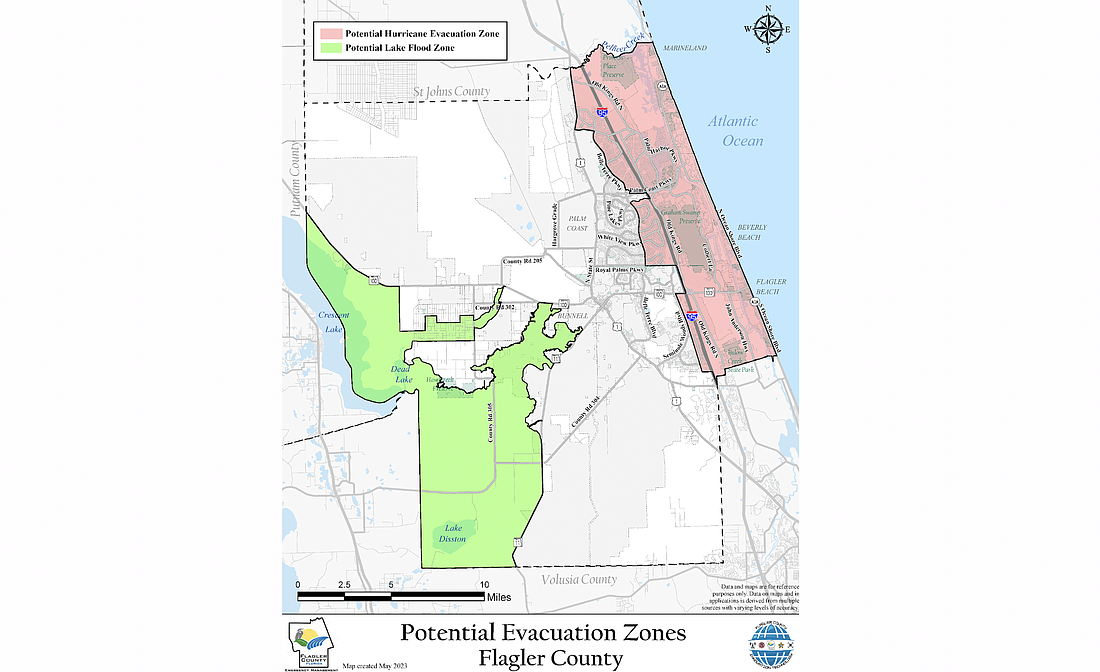- April 26, 2024
-
-
Loading

Loading

Flagler County’s hurricane evacuation zones used to carry letter designations — A, B, C, D, E and F. But those designations interacted confusingly with Palm Coast’s lettered community names: Someone in Evacuation Zone B, for instance, might not live in the B Section.
“This caused a lot of confusion with our residents,” Flagler County Emergency Management Director Jonathan Lord said at a hurricane season media roundtable on May 30. “We heard it every year for the last few years.”
So the county is dropping the evacuation zone letter designations and will order future evacuations by referring to specific neighborhoods and streets.

It might order an evacuation for an entire community like Grand Haven or Palm Coast Plantation, Lord said; in the case of Palm Coast’s lettered sections, the county may order out, for instance, the entire B Section, or the B Section east of a particular road.
The county has also simplified its potential evacuation map, creating two large zones in which evacuations may occur: One zone in areas east of U.S. 1, and another near Dead Lake and Crescent Lake.
Evacuation orders are driven largely by storm surge, and those regions are most susceptible, Lord said.
With a storm approaching, the county may alert residents in both of those higher-risk regions to be prepared to evacuate. As storm projections are refined, the county would order evacuations for more targeted areas.
There will also be another major messaging change from the county this year: The county will not speak of “closing” the two bridges over the Intracoastal.
The word closure has always been a mischaracterization, Lord said, since the restriction has only ever been one-way: The county has always allowed traffic off the barrier island. Limits applied only to traffic trying to enter the island.
But barrier island residents who heard about bridges being “closed” sometimes interpreted that to mean that they could no longer leave, he said.
“We don’t want people to ever feel that,” Lord said. Now, the county will warn people that it’s no longer safe to be on the roads or bridges, rather than calling bridges “closed.” Those calculations will be based on sustained wind speeds and gusts, he said. The threshold is around 40-45 mph, but, “It’s not a black-and-white kind of thing,” he said. “It really is looking at conditions.”
National Hurricane Center forecasters are predicting an average hurricane season this year, with 12-17 named storms, five to nine hurricanes and one to four major hurricanes. But that doesn’t mean people should get complacent, Lord said. Hurricane Andrew, one of the most damaging storms in U.S. history, occurred late in a slow season, he noted.
Lord urged residents to stock an emergency kit with a week’s worth of supplies and sign up for emergency alerts at flaglercounty.gov/departments/emergency-management.
“Picture being off the grid, being no electricity, no internet, potentially no water,” he said.
The state is holding two disaster preparedness sales tax holidays this year: One began May 27 and will end June 9, and another will be held from Aug. 26 to Sept. 8.